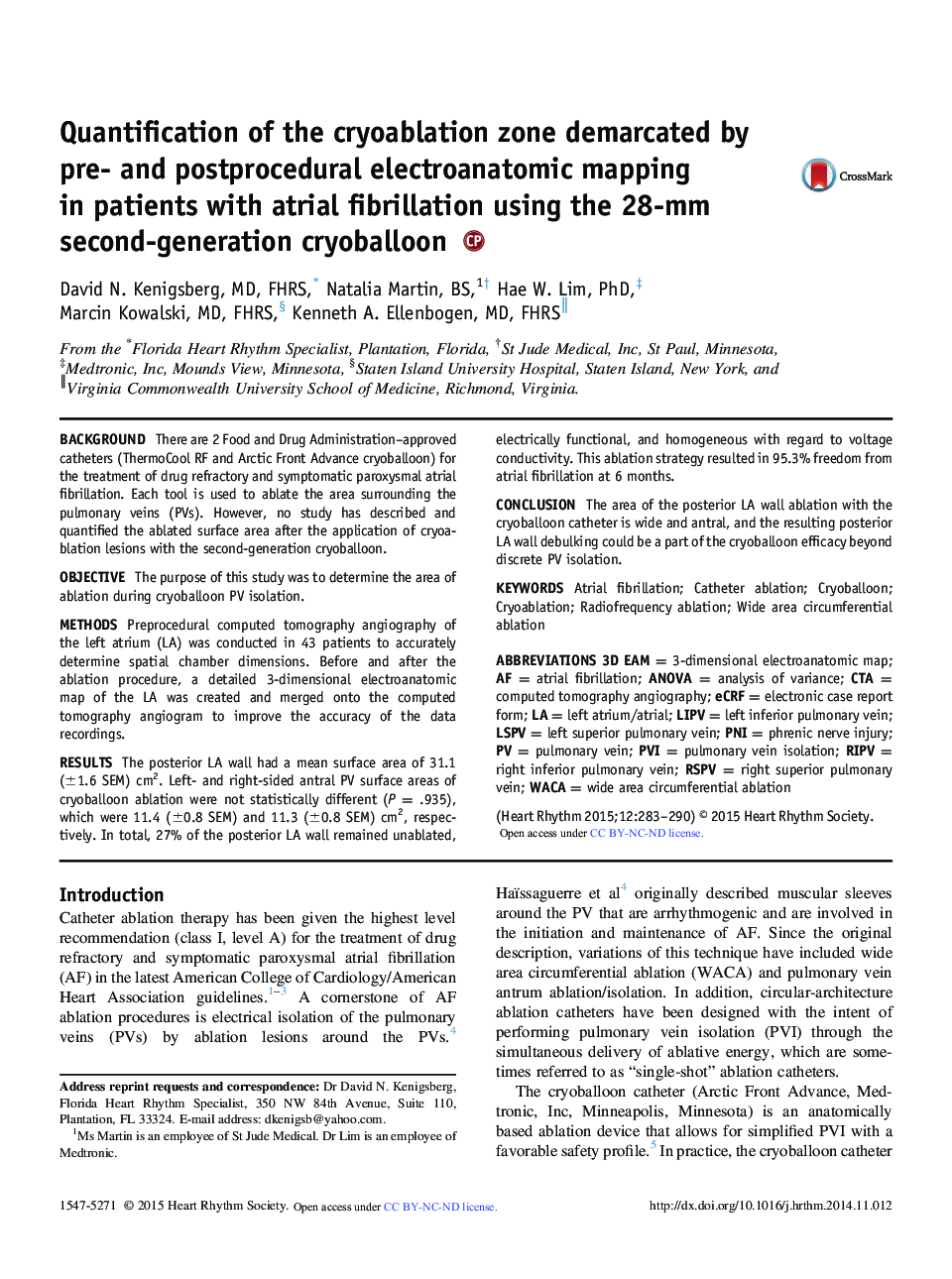| Article ID | Journal | Published Year | Pages | File Type |
|---|---|---|---|---|
| 5960389 | Heart Rhythm | 2015 | 8 Pages |
BackgroundThere are 2 Food and Drug Administration-approved catheters (ThermoCool RF and Arctic Front Advance cryoballoon) for the treatment of drug refractory and symptomatic paroxysmal atrial fibrillation. Each tool is used to ablate the area surrounding the pulmonary veins (PVs). However, no study has described and quantified the ablated surface area after the application of cryoablation lesions with the second-generation cryoballoon.ObjectiveThe purpose of this study was to determine the area of ablation during cryoballoon PV isolation.MethodsPreprocedural computed tomography angiography of the left atrium (LA) was conducted in 43 patients to accurately determine spatial chamber dimensions. Before and after the ablation procedure, a detailed 3-dimensional electroanatomic map of the LA was created and merged onto the computed tomography angiogram to improve the accuracy of the data recordings.ResultsThe posterior LA wall had a mean surface area of 31.1 (±1.6 SEM) cm2. Left- and right-sided antral PV surface areas of cryoballoon ablation were not statistically different (P = .935), which were 11.4 (±0.8 SEM) and 11.3 (±0.8 SEM) cm2, respectively. In total, 27% of the posterior LA wall remained unablated, electrically functional, and homogeneous with regard to voltage conductivity. This ablation strategy resulted in 95.3% freedom from atrial fibrillation at 6 months.ConclusionThe area of the posterior LA wall ablation with the cryoballoon catheter is wide and antral, and the resulting posterior LA wall debulking could be a part of the cryoballoon efficacy beyond discrete PV isolation.
